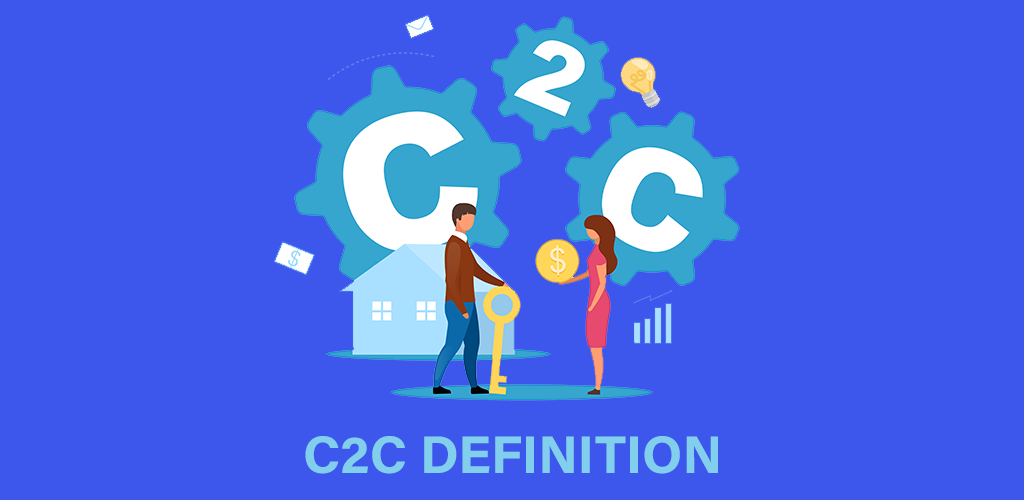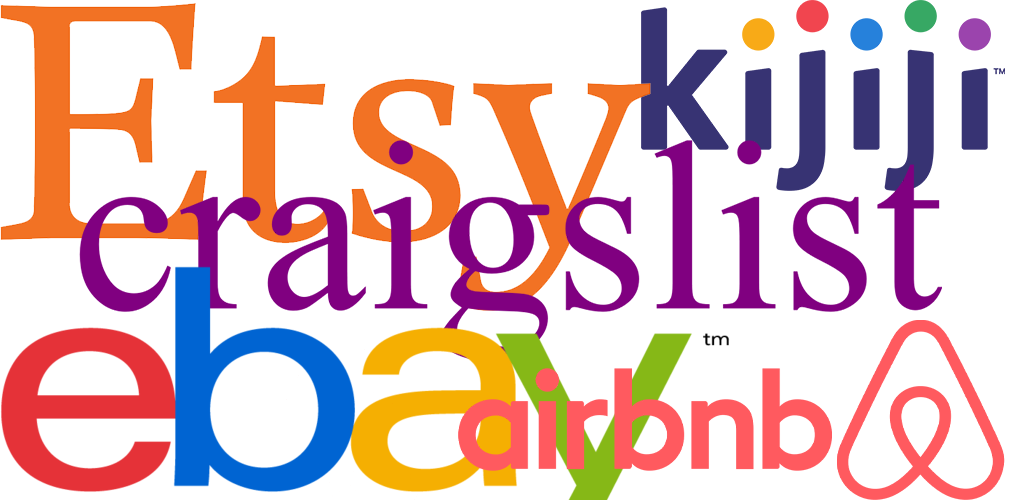C2C Business Crash Course: Definition, Examples, and Pros and Cons

Before the dawn of the internet, most businesses fell into one of two business model categories. The first category is business-to-business, where the company’s product is sold to a fellow organization. The second is business-to-consumer in which a company sells directly to the end user. However, with the creation and rise of ecommerce, a new model has emerged known as consumer-to-consumer, or C2C. But what is consumer-to-consumer, which businesses use this model, and what are the pros of cons of launching a C2C business?
- Definition
- Popular consumer-to-consumer businesses
- Pros and cons
Definition

As the name suggests, a consumer-to-consumer interaction occurs when one individual sells goods or services to another individual. For example, if one person sells their old coffee table to a neighbour, that interaction is considered to be consumer-to-consumer. Sales may be made through financial purchases, or may even take place as a trade. Although not a required criteria to fall into the consumer-to-consumer category, most of these transactions are initiated or carried out through an online medium, thanks to the power of the internet to more easily connect buyers and sellers. In recent years, there has been a rise of sales platforms and marketplaces created by third-parties to better enable consumer-to-consumer commerce.
Popular Consumer-to-Consumer Businesses

Some of the most popular companies in the world function as a C2C business. Most of those companies launched in response to the capability of the internet to connect a person with a massive audience in an instant. A few popular consumer-to-consumer businesses include:
- Etsy: Etsy first launched in 2005 as a platform to connect creators with audiences. Focusing on handcrafted and vintage goods, the company allows individuals to set up a store through which they can sell their handmade items to consumers.
- Ebay: Ebay first hit the web in 1995 and was an early adopter of the C2C business model. Their third-party platform allows users to auction goods to the highest bidder or simply sell them at a set value. In many cases, eBay users turn to the platform to sell one-of-a-kind collectors items that have a niche market they wouldn’t be able to otherwise reach.
- Kijiji and Craigslist: Both of these platforms have expanded consumer-to-consumer selling at a mostly-local level. Before the advent of the internet, if a person wanted to sell a possession or offer a service in their area, the best way to do so was to pay for a classified ad in a newspaper. Consumer-to-consumer ecommerce platforms introduced ease and convenience to the task by offering a single location for all ads and audiences. They also help to facilitate communication between parties.
Pros and Cons of Running a C2C Business

The consumer-to-consumer business model is great for budding entrepreneurs, hobbyists wanting to sell their craft, and everybody in-between. However, before deciding that C2C is the model for you, you should be aware of the pros and cons associated with it. These are a few of the biggest:
- Pro: The costs associated with running a consumer-to-consumer company are fairly low. Most third-party platforms charge very little (or don’t charge at all) to set up a storefront. Most businesses of this type also don’t need to pay for a brick-and-mortar storefront, inventory storage, or employee wages (because the business owner is usually the only employee). Low costs also mean higher profit margins.
- Pro: Marketing a C2C business is often simple to do. Because most businesses of this type are hosted on a third-party platform, that platform brings in the audience. Your responsibility is to attract them to your particular product or store, over those of your competitors.
- Pro: Online consumer-to-consumer businesses are often more convenient to shop at than brick-and-mortar stores, thus attracting a wider audience. Because audiences are increasingly preferring to shop with small businesses that focus on quality and craftsmanship, consumer-to-consumer companies also have a growing advantage over big-box chain stores.
- Pro: Entering the market with a C2C company is much easier than with a company that ascribes to a different business model. Very rarely to C2C business owners have to develop a line of products, create a standalone website, or generate an audience completely from scratch. In addition, if your product is unique enough, you may fill a need in the market that many other businesses do not, thus reducing competition.
- Con: In some cases, consumer-to-consumer transactions don’t actually guarantee that you, the seller, are paid by your buyer. This is common with platforms that don’t allow you to accept payment via their website. For example, if you sell a couch on Kijiji and agree to accept payment through e-transfer once the customer gets the couch home, there’s no guarantee that you’ll receive your money and no means with which to retrieve the couch.
- Con: Although some consumer-to-consumer businesses can see rapid growth and huge financial success, many C2C transactions are self-limiting. If you’re replacing the furniture in your house and sell the old pieces online, once the last piece is gone, so is your “business.”
- Con: Local consumer-to-consumer transactions also lack the safety of online-exclusive or in-store businesses. In many cases, you must meet with a stranger, which can lead to robberies and violence if the intentions of the buyer are nefarious. Many townships are beginning to offer safe meeting spaces for this particular issue.
Visit Shopivo and stay tuned for exciting news and updates! Sign up for our emails and stay up-to-date on new developments and features.
